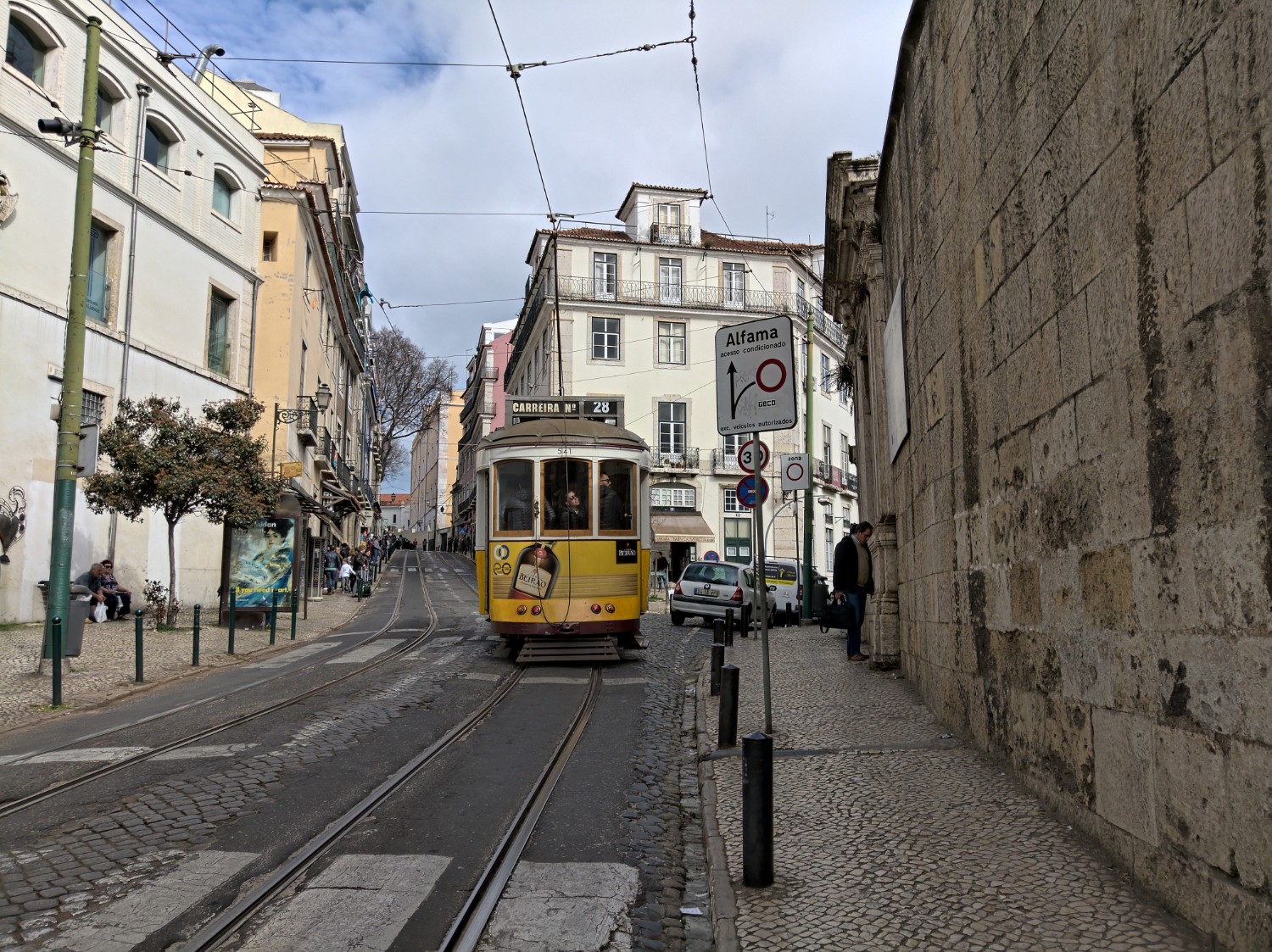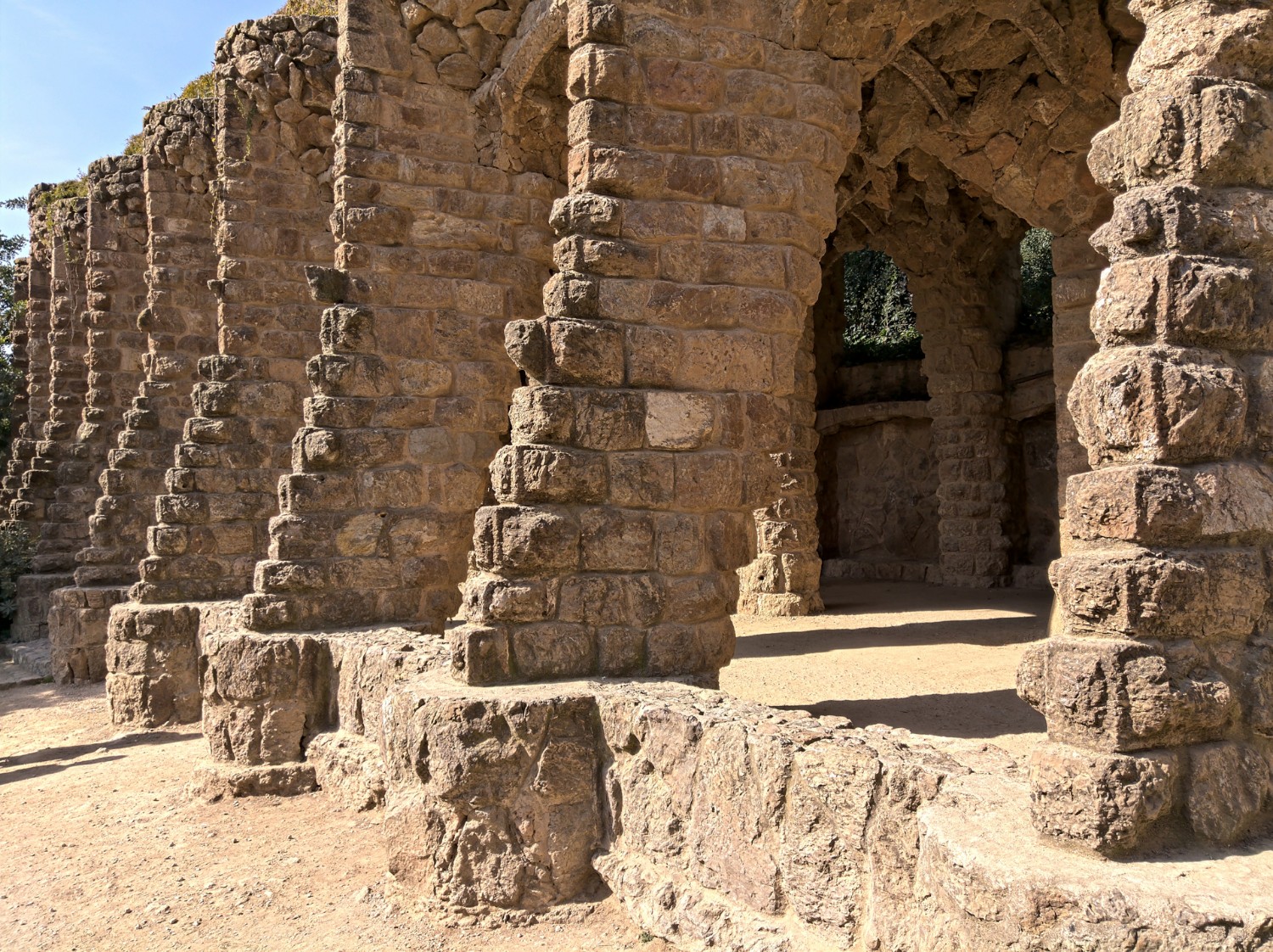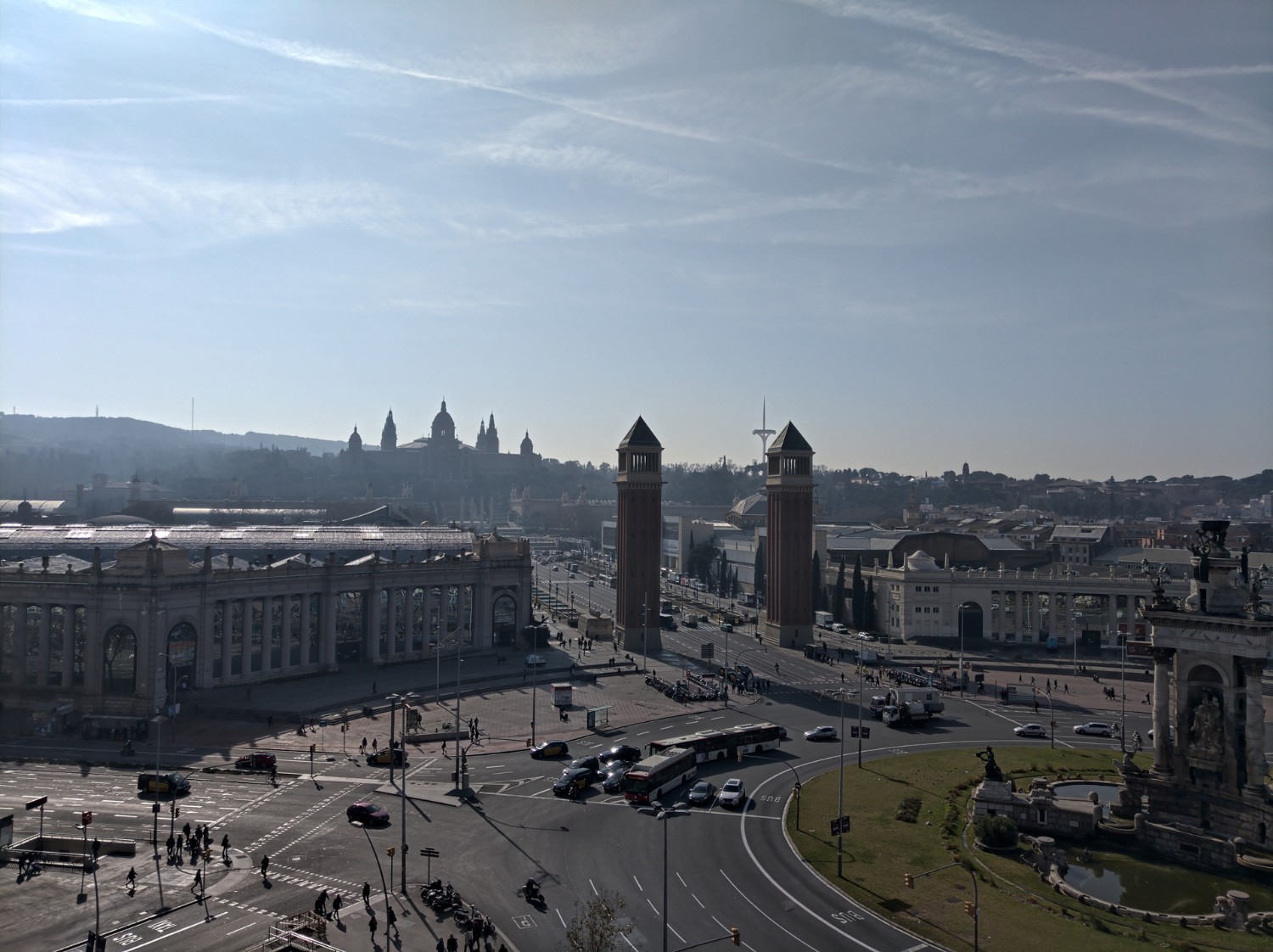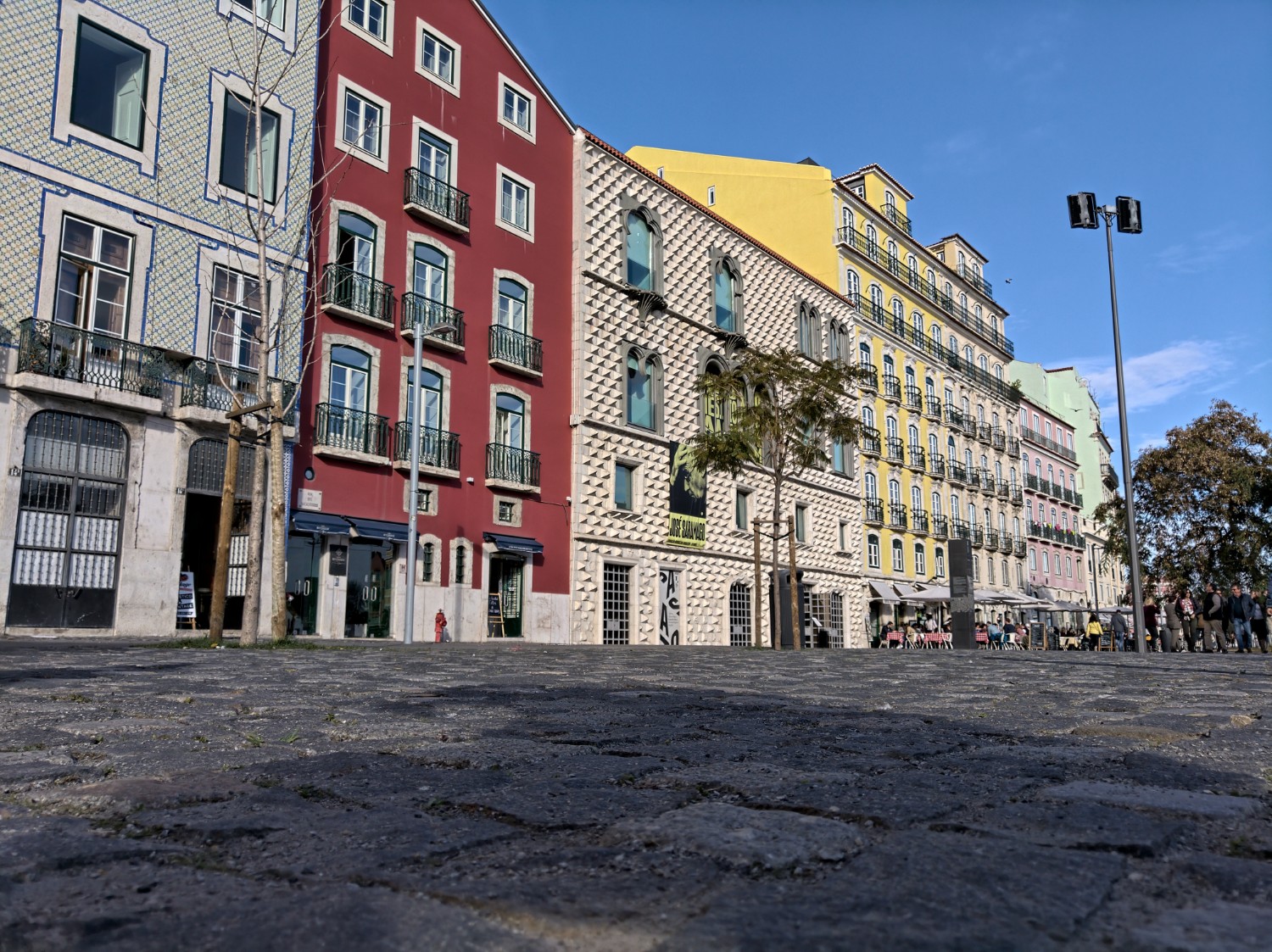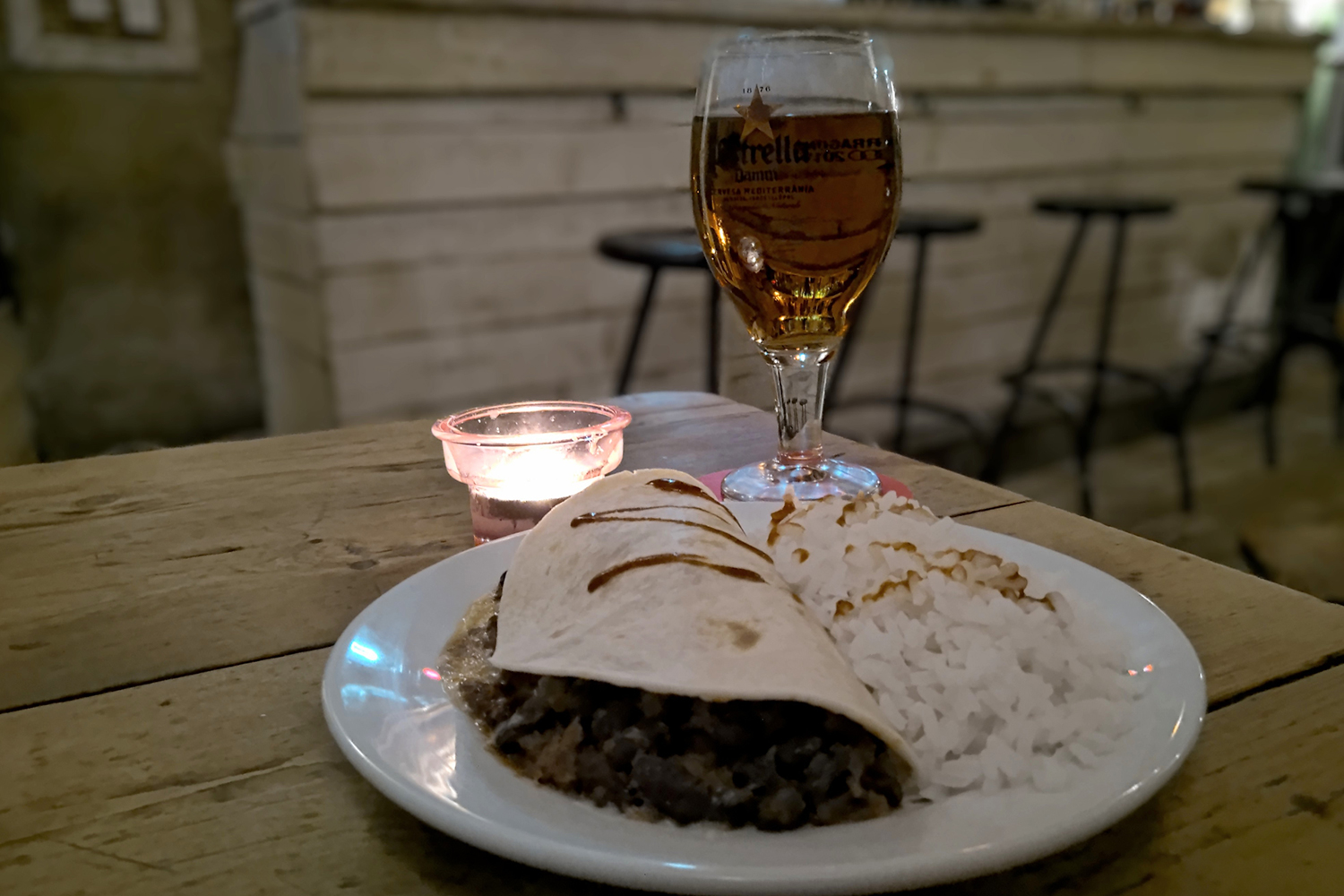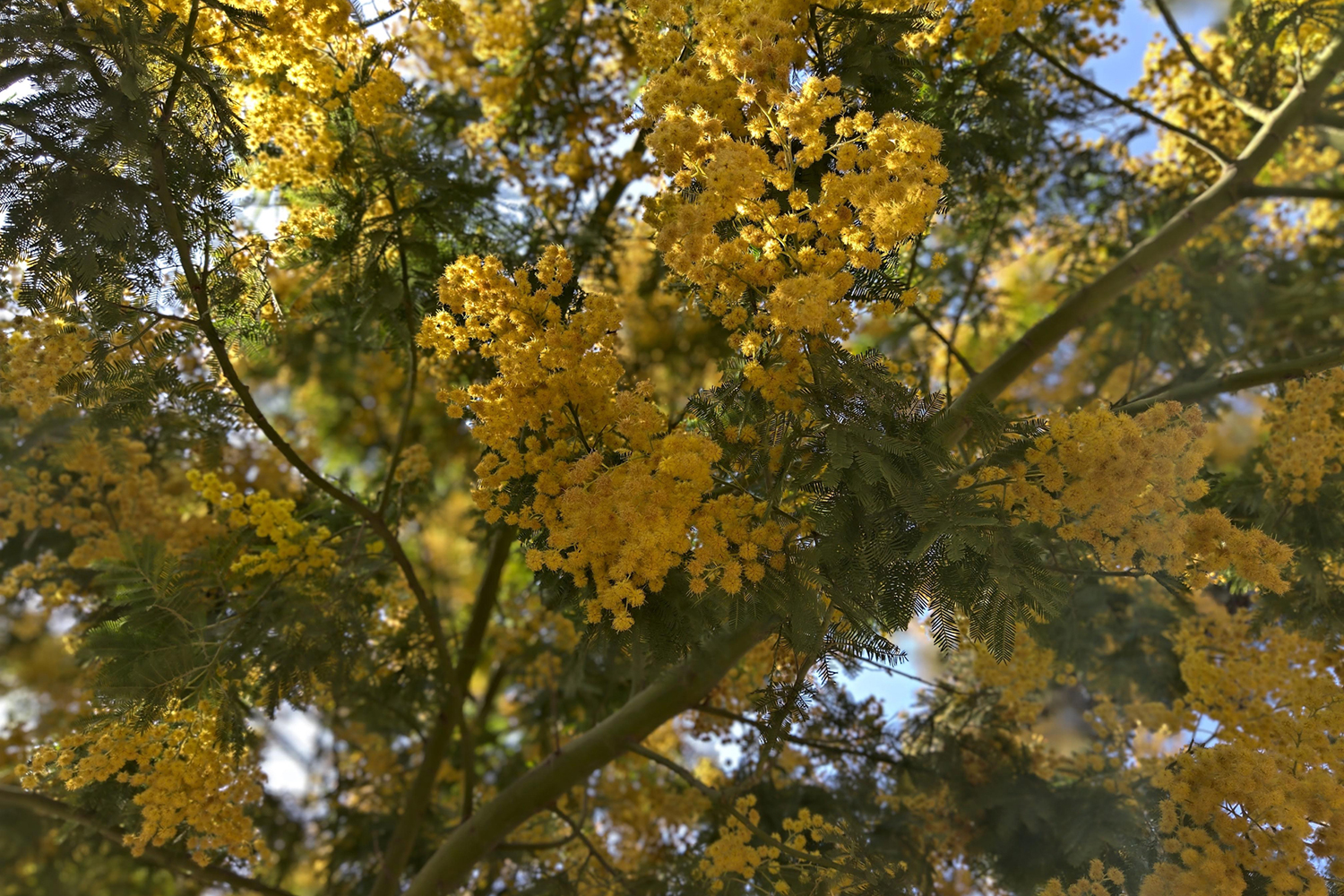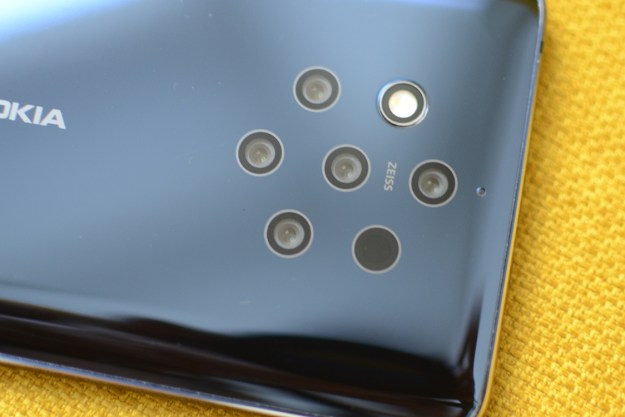
“It’s not for everyone, but the limited-edition Nokia 9 will boost creativity with its five cameras.”
- Camera is fun to use
- Good display
- Unique, eye-turning design
- Strong performance
- Clean Android One software with timely updates
- Slow image processing
- Poor in-display fingerprint sensor
- Battery life could be better
I’m on vacation in Lisbon, Portugal, and I have several phones at my disposal — the Samsung Galaxy S10 Plus, Huawei Mate 20 Pro, Google Pixel 3 XL, Apple iPhone XS Max, and Nokia 9 PureView. I’ve spent enough time with each phone to know what I do and don’t like, and while this may be because it’s the newest phone in my hands, I’m consistently drawn to using the Nokia 9 to capture my time here. That’s not to say it’s the best phone of the lot — neither is it the best camera phone — but there’s a sense of excitement when I use the five-camera system that I haven’t felt on any other smartphone in a long time.
But the Nokia 9 has its drawbacks. The phone, made by HMD Global, has an in-display fingerprint reader that’s finicky; the battery life could be better; and image processing is a bit slow (though there’s some benefit to this that I’ll explain later). It’s not the best choice for most people at its its $699 retail price. There are also reports of multiple bugs on several units, particularly where apps start to crash after the phone goes below 50 percent — we haven’t run into too many of these problems on our review unit, but we’ve reached out to HMD asking about a timeline for when people can expect the bugs to be fixed.
Keep in mind, this is a limited-edition phone, so there’s only so many that will be available — it’s already back ordered until April. That makes the phone feel a little more exclusive when it’s in your hands. Most people looking for a phone in this category should look at the Pixel 3, iPhone XR, Galaxy S10e, or OnePlus 6T instead, but I think the Nokia 9 PureView is worth buying specifically if you’re a photography enthusiast.
Sleek design, bright display
There’s nothing fancy about the Nokia 9 from the front. The screen is quite traditional by 2019’s standards: There’s no hole-punch camera floating somewhere on the screen, and you won’t even find a notch. This may appeal to quite a few people that abhor these new screen styles.
Instead, there are bezels on the top and the bottom, but they’re thin and the phone still looks smart. More impressive is the build quality — a 6000-series aluminum unibody is paired with Gorilla Glass 5, which helps make the Nokia 9 more sturdy. The edges are slightly rounded, but they’re easy to grip, and the phone never once felt unwieldy. It is slippery, though, so you should be careful with where you place it as it may easily slide off and hit the floor. (Maybe get a case?)

The power and volume buttons are close to each other and are easily accessible. They are satisfying to press, though a textured power button would have been a nice touch to distinguish them. You’ll be disappointed if you’re looking for a 3.5mm headphone jack, as there’s none here, but a USB-C port sits at the bottom.
No camera bump here, the Nokia 9 will sit flat on your desk.
The display is a 5.99-inch POLED screen with a sharp 2,880 × 1,440 resolution. It’s not jaw-dropping like the high-resolution Dynamic AMOLED screen on the Galaxy S10, but I never found the screen lacking. In fact, I’ve consistently been impressed with the screen’s brightness, as I’ve been able to read it without fail in direct, bright sunlight. The screen is a little over-saturated though — as you can see above — but if this bothers you there’s a “Basic” display setting that tones colors down.
The Nokia 9 supports HDR10. Movies and videos have good contrast and are a pleasure to watch, thanks to a higher dynamic range. But I’m not a fan of the phone’s mono bottom-firing speakers, as they’re easy to block while watching content in portrait orientation. They get loud and sound decent (though bass is lacking), but HMD should have followed Google’s lead with stereo front-facing speakers, like on the Pixel 3 — especially considering there’s space for them on the bezels.
It’s the back that’s the highlight here. The five-camera setup is laid out in a way that mimics spider’s eyes, which may make some people shudder — and it also may irk people with trypophobia, a fear of clustered holes. None of that describes me, and I can’t stop admiring its beauty. It looks so unlike any existing camera setup that it will make everyone do a double take, but it’s the fact that the cameras sit flush on the back that makes it even more impressive; no camera bump here, the Nokia 9 will lie flat on your desk. It’s just a cleaner design that’s worth appreciating. (More on the camera later.)
Notice that the fingerprint sensor is missing? The Nokia 9 joins a growing wave of phones that are opting for in-display fingerprint sensors, like the Galaxy S10, the OnePlus 6T, and the Huawei Mate 20 Pro. But everyone’s using different technology — so far, I’m quite happy with the ultrasonic tech Samsung is using in its newest phones. The sensor on the Nokia 9? Not so much.
You need to press hard onto the screen for it to register, but even when you do, it’s finicky about when it wants to identify the print. I’ve reset my fingerprint multiple times — even added multiple profiles of the same fingerprint to see if it would improve — and still it’s hit or miss when the phone wants to unlock. I’ve resorted to just using a pattern unlock and the un-secure Face Unlock option, which works relatively well, but you can’t use this to access secure apps or authenticate purchases.
The Nokia 9 PureView only comes in a blue color option, which makes it look opulent, though I’d have loved to see more options to choose from.
Good performance
The Nokia 9 is powered by Qualcomm’s Snapdragon 845 chipset, the processor that was used in almost every flagship smartphone in 2018. Some of you may be a little annoyed by this, especially considering there are quite a few Android phones announced with the latest Snapdragon 855 processor.
Is the Snapdragon 845 a bad processor? Hardly. I didn’t run into issues with performance — the 6GB of RAM helps too — but it’s easy to feel miffed about buying a new phone that uses last year’s tech. Well, if you can get past it, you don’t have much to worry here; the Nokia 9 PureView tackled games like Alto’s Odyssey, Pako 2, and Breakneck without fail. Day-to-day tasks and split-screen apps posed no problem either. Performance is good. Period.
Here are a few benchmark options:
- AnTuTu 3D Bench: 275,985
- Geekbench CPU: 2,363 single-core; 8,783 multi-core
- 3DMark Sling Shot Extreme: 4,216 (Vulkan)
These scores are in line with other phones that use the Snapdragon 845. The Nokia 9 comes a little lower than the Pixel 3 and the OnePlus 6T in AnTuTu, but benchmark scores don’t tell the full picture. Expect the same performance, and you likely will never feel as though the phone can’t accomplish a particular task due to its chip.
There’s a reason for the lack of a Snapdragon 855 — the phone has been in development for quite some time, and HMD has been working closely with Qualcomm to ensure the 845 processor could support the five-camera array. The 855 chip is simply too new, and opting to use it would have only further delayed the Nokia 9.
Thankfully, the Nokia 9 comes with 128GB of internal storage, which is the base storage option you’ll find on newer phones like the Samsung Galaxy S10 range. There’s no MicroSD card, which is sad to see considering the photo file sizes are quite large.
The most fun you’ll have with a phone camera
You should know, the Snapdragon 845 chipset inside the Nokia 9 is unlike any other; it’s part of a complex multi-chipset architecture that’s designed for the five cameras. There’s a special Lux Capacitor chipset that helps the phone harness the full power of the Snapdragon 845 for the camera experience. Five cameras mean a lot of data is being captured, and so an Image Signal Processor (ISP) needs help computing it (there’s 240 megapixels of data to deal with, after all). Tapping into the Digital Signal Processor (DSP) delivers three times noise reduction, at 10 times lower power, and the Graphics Processing Unit (GPU) manages the 1,200-layer depth map that’s captured.
It’s not just a close partnership with Qualcomm that made this work, though. HMD worked with Zeiss to ensure the cameras were tuned precisely, and the multi-camera technology (including the Lux Capacitor) largely comes in collaboration with Light. For those unaware, Light is a company that made the L16, a 16-camera device that promises DSLR-like image quality in a much more portable form factor. HMD and Light said transitioning the tech to a smartphone instead will offer “next-generation imaging for photography enthusiasts.”
Why? Because most phones with multiple cameras have clear, identified roles that do not let you use them all at once. Instead, it’s usually a standard lens paired with a telephoto lens for 2x optical zoom, or an ultra-wide-angle lens for a wider shot. On the Nokia 9, you’re getting five 12-megapixel lenses with a f/1.8 aperture each. Tap the shutter button once, and all five cameras snap a photo — sometimes more depending on the conditions you’re in — and fuse them together for a much more detailed image.
This fusion process can take some time — around 10 to 20 seconds — which can be a deal breaker (though you do get to see a preview of the photo you just took as it stacks all the photos together). This processing time needs to be shortened, and it could through software updates later on, but I’ve also enjoyed it in a rather odd way. It made me forget about checking on my photos constantly, and instead I took the time to snap more pictures. The delay also led me to check my collective photographs at a later point, analyze them all, choose one, and edit it to post to social media, rather than the more carefree method I’ve usually followed with smartphones of just sharing a photo immediately as I snapped it. Using the Nokia 9 felt more akin to the approach I have using a DSLR.
Three of the cameras are monochromatic sensors, while the other two are RGB. This is because monochromatic sensors can capture 2.9-times more light than RGB cameras, so the Nokia 9 has the potential to deliver up to 10-times more light. There’s also a fantastic monochrome camera mode (that uses the three sensors) for beautiful, true black-and-white images if that’s a style you want to pursue.
So, what are standard photos like? The one word that comes to mind is natural. These photos are often some of the most true-to-life photos I’ve seen come from a smartphone, and that means hardly anything is oversaturated, contrast doesn’t look over-the-top, and there’s strong detail. The camera app isn’t the fastest to launch — it takes about 1.8 to 2.2 seconds — and the shutter doesn’t offer zero shutter lag (but it’s close) so that does mean trying to take a quick action shot may end up with something a little blurry.
- 1. Pixel 3.
- 2. Nokia 9 PureView.
Low-light photographs look good too, but detail tends to not be as rich as photos taken in good lighting. We’ve seen better from the likes of the Pixel 3 (particularly with Night Sight). There’s no optical image stabilization, so you need to be very still to ensure photos aren’t blurry at night. But the Nokia 9 almost always captures the right ambiance, compared to other phones. Looking back at the photographs, it evokes the same mood I felt when I was in the environment, and it still maintains that natural look.
The photos from the camera come in both JPEG and RAW format (this needs to be turned on in the camera settings). You can take a RAW image — which is uncompressed and contains more information than JPEG — to the Adobe Lightroom Android app and tweak to perfection (or, rather, what you deem to be perfection). It offers far more control over your photographs, which is a big reason why it’s a lot of fun using the Nokia 9 PureView. You’re very much a part of the process, which is not necessarily something I’ve felt using other smartphone cameras. Because the five cameras capture so much more data, it’s impressive what you can do with the RAW images on this phone, which is far more than what you can do with RAW images from other devices like the iPhone and Pixel 3. The example below compares an edit of the RAW file compared to the JPEG from the Nokia 9.
- 1. RAW (edited).
- 2. JPEG.
I wasn’t able to bring out details in the person’s face in the JPEG file, but it was easy to do in the RAW. This can be done to any photo you capture, though it definitely has a learning curve if you’ve never edited photos. It’s why this phone is marketed toward photography enthusiasts more so than the average person who simply wants to tap the shutter button and send the image to social media. (Even if you aren’t a savvy photo editor, you can still shoot RAW and use Adobe Lightroom’s auto function to do the work for you.)

Adobe will also be issuing an update to the Android Lightroom app so it will support all five lens profiles on the Nokia 9, for better image quality and robust control.
One of my favorite features in the Nokia 9 is Depth Map, which needs to be switched on. The five cameras can capture more than 1,200 layers of depth data in photos (except in Monochrome mode), so in Google Photos, you can completely refocus a photo, while also adjusting the intensity of the background or foreground blur. You can completely change how the photo looks, and it’s impressive to see how well the cameras identify the levels of depth in images. The blur effect looks good, and while there are errors occasionally, I think the Nokia 9 is one of the best smartphone cameras at the moment to capture photos with strong bokeh. The downside is that Depth Control is only available for JPEG files (doesn’t work with Monochrome mode either), which may not be the file type you want to use most of the time if you prefer having more editing controls.
The front 20-megapixel camera can produce detailed images, though its HDR capabilities aren’t as strong so it’s not unusual to see overblown highlights in the background in sunny conditions.
There are a few camera features like Pro Mode, which lets you take 10-second long exposure photos to illuminate night scenes; Bothie mode allows you to use both the front and rear camera at the same time; and Live Bokeh is akin to Portrait Mode, and it works similarly to Depth Map.
We’ve gone into a similar level of detail with photo examples in this story if you want more, but it’s safe to say that I haven’t had as much fun with a camera in a long time. The Nokia 9 makes me feel like I’m in control of my photographs again, and its varied set of abilities make me think more creatively about the photo I want to capture. It’s not the best smartphone camera for most people — that’s the Pixel 3 — but I think this is the best smartphone camera for photography enthusiasts that are patient enough to tinker and make use of all the capabilities on the Nokia 9.
Android One
There’s nothing to worry about the phone’s software, as it’s an Android One smartphone, meaning it runs a clean and uncluttered version of Android (also known as stock Android), with no bloatware. The bigger selling point is the promise of fast software updates — the phone will get two years of version updates and three years of security updates. It’s already running the latest Android 9 Pie version, and HMD has a good track record of maintaining a fast pace of updates for its phones.
There are virtually no other software features on the phone, which is a part of the allure of Android One. This barebones approach helps make the interface dead simple to use, while still looking good.
Battery life
A 3,320mAh battery is packed into the phone, which means the Nokia 9 will last just about a day — no more, no less. We frequently hit 25 percent by 6 p.m. after a day of medium-to-heavy use.
If you’re a heavy user, there’s a good chance you may need to plug it into a charger to make sure it will last. It’s a good idea to use a battery pack if you plan on using the camera a lot as well. I wish the Nokia 9 had a bigger battery, as it’s one of the weaker aspects of the phone, delivering around three hours of screen-on time.
The phone performed well in our video playback battery test, though. It lasted for 9 hours and 26 minutes, coming close to the Galaxy S10 Plus’ score of 12 hours and 40 minutes. It goes to show that it’s likely the camera that drains the battery the fastest.
There’s Qi support, so if you’re in an office, for example, you can place it on a wireless charging pad throughout the day to keep it topped up.
Price, availability, and warranty information
The Nokia 9 PureView costs $699 and goes on sale in the U.S. starting March 4 — here’s how and where to buy it. It’s a limited-edition phone, so at a certain point when HMD’s stock runs out, it won’t be on sale anymore — it’s just unclear what the threshold is as the phone is already backordered until April. You can order it from Amazon, Best Buy, or B&H.
HMD Global offers a standard limited warranty that covers manufacturer defects for 12 months since the date of purchase.
Our Take
If you don’t care much for the camera on a phone, or you want a camera to quickly capture good pictures, the Nokia 9 PureView is not for you. It can capture great photos without needing to fuss about with the RAW files, but the phone’s true potential is unlocked when you embrace all its features. It’s an extremely fun camera to use, with a strong display, great performance, and clean Android software. Battery life is a little disappointing, and I wish the fingerprint sensor was better.
Is there a better alternative?
Yes, many. If you prize performance and software customization, the OnePlus 6T is a good bet (though we could see a OnePlus 7 soon), especially as it costs $550. The Google Pixel 3 is our choice for those who want great software and a great camera that will reliably snap a good photo without needing to do much else, and it will set you back $799, though it can be bought for less now. The Samsung Galaxy S10e is worth a look with its $750 price tag, and if you’re on iOS, the iPhone XR is a great choice for the same price.
But perhaps only Huawei’s Leica-tuned P20 Pro — or upcoming P30 Pro — may be the few options that can challenge the Nokia 9 PureView with sheer enjoyment as soon as you tap the shutter button.
How long will it last?
The body of the phone is IP67 water resistant, which is the standard for all flagship phones, and that means the Nokia 9 can stay alive when submerged up to 1 meter for 30 minutes. The phone is quite slippery, so a case is necessary to protect the glass on both sides.
This is an Android One phone, so you’ll get two years of Android version updates, and three years of security updates. They’ll come fairly quickly too.
Should you buy it?
No. It’s a good phone, but the only people that should really buy this phone are those that love tinkering with photos and enjoy exploring all the different camera features in a phone. If that’s you, then you’ll fall in love with the Nokia 9. Get it before it’s sold out.
Editors' Recommendations
- Ignore the rumors — this iconic phone brand isn’t going away
- Nokia’s new phone is so tough, you can almost pressure wash it
- HMD Global wants you to keep your new Nokia phone and save the planet
- Nokia goes low-cost crazy with 3 new cheap phones at MWC
- HMD Global shows its serious about U.S. expansion with 5 new Nokia phones






